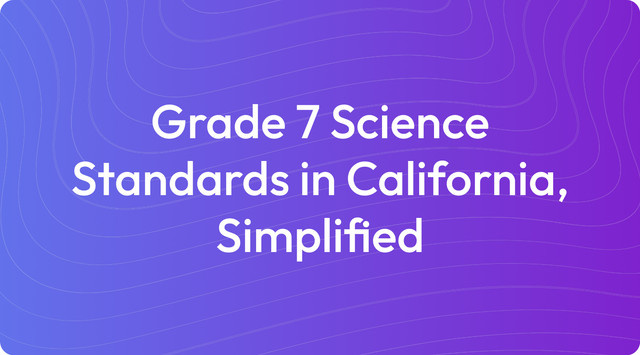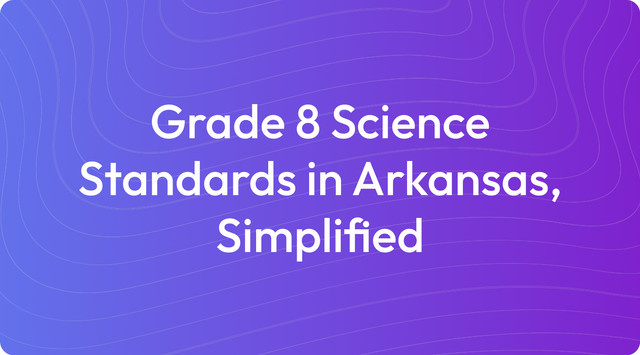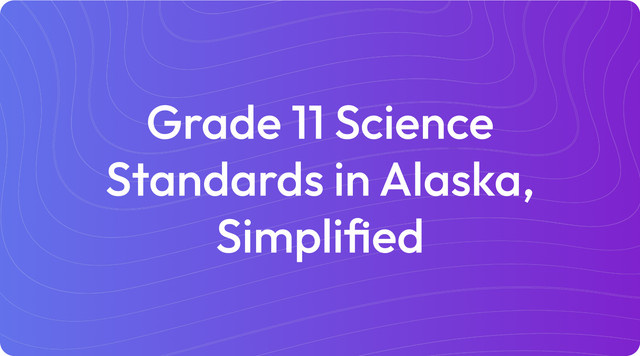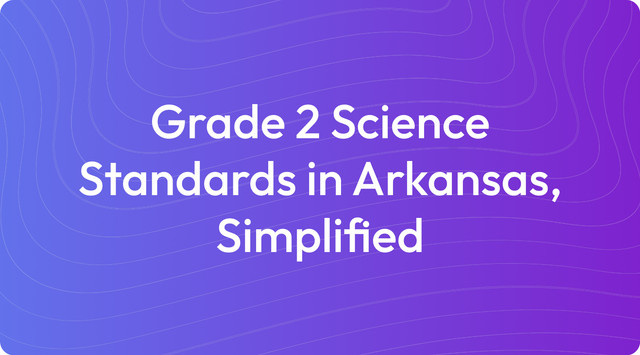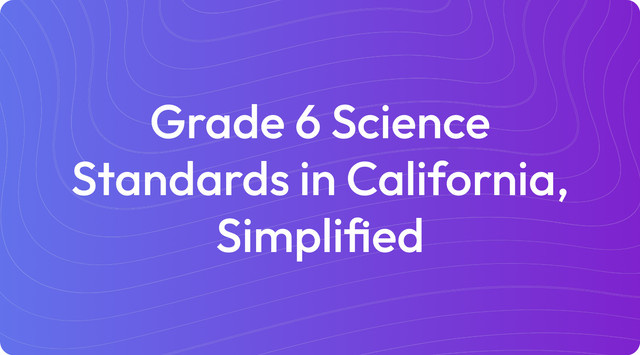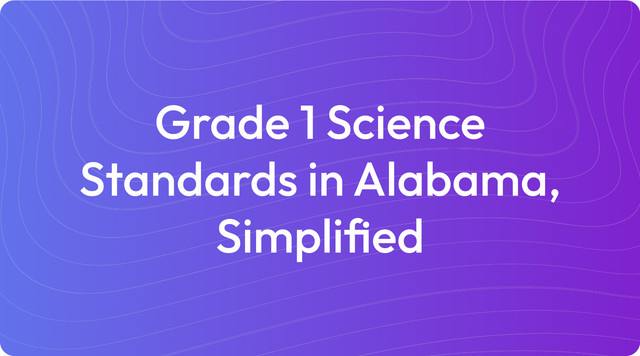Grade 4 Science Standards in Alaska, Simplified
Grade 4 science in Alaska covers energy, waves, ecosystems, and changing Earth. For a simple guide, read more on TeachShare!
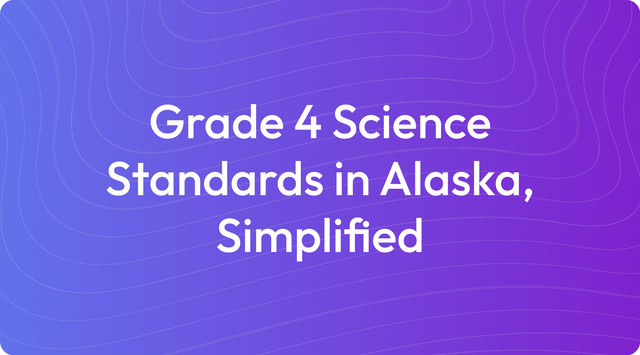
Understanding and implementing education standards is a core part of a teacher's work. They provide a map for what students need to learn, but they don't always show the path to get there. Our goal is to help you bridge the gap between state requirements and your classroom instruction.
Think of education standards as a set of clear learning goals for your students. They specify the knowledge and skills students should acquire, giving you a consistent framework for your curriculum. For instance, the Grade 4 Science Standards in Alaska state that students should learn about energy and waves, leaving it to you to design hands-on activities that bring those concepts to life.
What Are Grade 4 Science Standards in Alaska?
The Grade 4 Science Standards for Alaska, adapted from the Next Generation Science Standards (NGSS), provide a clear roadmap for your instruction. They focus on building foundational knowledge through hands-on learning and problem-solving related to real-world phenomena, with connections to Alaska's unique environment. Here is an outline of the core standards and learning goals for fourth-grade science.
1. Physical Science (PS): Energy and Waves
Standard 4-PS3-1: Use evidence to construct an explanation relating the speed of an object to the energy of that object.
Standard 4-PS3-2: Make observations to provide evidence that energy can be transferred from place to place by sound, light, heat, and electric currents.
Standard 4-PS3-3: Ask questions and predict outcomes about the changes in energy when objects collide.
Standard 4-PS4-1: Develop a model of waves to describe patterns in terms of amplitude and wavelength and show how waves can cause objects to move.
2. Life Science (LS): Organisms, Structures, and Processes
Standard 4-LS1-1: Construct an argument that plants and animals have internal and external structures that function to support survival, growth, behavior, and reproduction.
Standard 4-LS1-2: Use a model to describe how animals receive different types of information through their senses, process the information in their brain, and respond to it in different ways.
3. Earth and Space Science (ESS): Earth’s Systems
Standard 4-ESS1-1: Identify evidence from patterns in rock formations and fossils in rock layers to support an explanation for changes in a landscape over time.
Standard 4-ESS2-1: Make observations and measurements to provide evidence of the effects of weathering or the rate of erosion by water, ice, wind, or vegetation.
Standard 4-ESS3-1: Obtain and combine information to describe that energy and fuels are derived from natural resources and their uses affect the environment.
4. Engineering Design (ETS): Problem-Solving
Standard 3-5-ETS1-1: Define a simple design problem reflecting a need or a want that includes specified criteria for success and constraints on materials, time, or cost.
Standard 3-5-ETS1-2: Generate and compare multiple possible solutions to a problem based on how well each is likely to meet the criteria and constraints of the problem.
Standard 3-5-ETS1-3: Plan and carry out fair tests in which variables are controlled and failure points are considered to identify aspects of a model or prototype that can be improved.
Key Learning Goals for Grade 4 Science in Alaska
Energy and Motion: Students explore how energy is transferred (e.g., through heat, light, and sound) and how it affects the motion of objects.
Organism Adaptations: Students learn how plants and animals have structures that help them survive, grow, and reproduce.
Earth Systems: Students investigate how weathering, erosion, and fossil evidence show changes in landscapes over time.
Engineering Practices: Students design, test, and improve solutions to address real-world problems, such as creating renewable energy models or preventing erosion.
Connection to Alaska: Students explore renewable energy options like wind or geothermal energy, as well as local landscapes shaped by glaciers, rivers, and erosion.
The framework for these standards is guided by the Next Generation Science Standards and resources from the Alaska Department of Education.
Key Tested Standards
The Grade 4 Science Standards in Alaska focus on core concepts in energy, waves, life structures, Earth’s systems, and engineering design. While the official Alaska Science Assessment occurs in 5th grade, these standards are key for local assessments and build the foundation for future success. Below are the standards that are most emphasized in the curriculum.
Key Tested Standards for Grade 4 Science in Alaska
1. Physical Science (PS): Energy and Waves
Standard 4-PS3-1: Use evidence to explain the relationship between an object’s speed and its energy.
Why It’s Key: This standard builds a foundational understanding of motion and energy, which is essential for all physical sciences.
Standard 4-PS3-2: Provide evidence that energy can be transferred between places by sound, light, heat, and electric currents.
Why It’s Key: It connects abstract concepts of energy to real-world phenomena that students can observe, like heat transfer or electricity.
Standard 4-PS4-1: Develop a model to describe wave patterns, including amplitude and wavelength, and show how waves can move objects.
Why It’s Key: This is foundational for studying sound, light, and other forms of energy that travel in waves.
2. Life Science (LS): Structures and Processes
Standard 4-LS1-1: Construct an argument that plants and animals have internal and external structures that support survival, growth, and reproduction.
Why It’s Key: It helps students understand how organisms are adapted to their environments, a crucial concept in life science.
Standard 4-LS1-2: Use a model to describe how animals use their senses to process information and respond to their surroundings.
Why It’s Key: Students explore how organisms interact with their environment, building an understanding of sensory systems and behavior.
3. Earth and Space Science (ESS): Earth’s Systems
Standard 4-ESS1-1: Identify evidence from rock layers and fossils to explain changes in a landscape over time.
Why It’s Key: This connects geological evidence to the history of Earth, laying the groundwork for understanding our planet’s long-term processes.
Standard 4-ESS2-1: Provide evidence of weathering and the rate of erosion caused by water, ice, wind, or plants.
Why It’s Key: Students investigate how natural forces shape the land, which is central to understanding Earth’s dynamic systems.
Standard 4-ESS3-1: Describe how energy and fuels are derived from natural resources and how their use affects the environment.
Why It’s Key: It introduces the concepts of renewable and nonrenewable resources, helping students think critically about sustainability.
4. Engineering Design (ETS): Problem-Solving
Standard 3-5-ETS1-1: Define a simple design problem that reflects a need and includes criteria for success and constraints.
Why It’s Key: Students learn to frame a problem and think critically about the requirements for a successful solution.
Standard 3-5-ETS1-2: Generate and compare multiple solutions to a problem to determine which is most likely to succeed.
Why It’s Key: This builds evaluation skills, which are a core practice in engineering and design.
Standard 3-5-ETS1-3: Plan and carry out fair tests to identify areas for improvement in a model or prototype.
Why It’s Key: Students develop critical thinking and problem-solving skills by testing and refining their designs.
Why These Standards Are Key for Testing
These standards are designed to assess a student's ability to think and act like a scientist. They focus on the following skills:
Analyze and Explain Phenomena: For example, explaining how fossils show landscape changes or how energy moves through a system.
Conduct Investigations: For example, testing how waves move objects or how erosion affects landforms.
Develop and Test Models: For example, designing a structure that uses renewable energy or mimicking how animals process sensory information.
Use Evidence: For example, using data from investigations to support claims about energy transfer or erosion.
All standards and learning goals are based on the official state and national standards.
Example Learning Objectives for Unit Planning
Learning objectives translate broad standards into clear, student-focused goals for each lesson. They help you design targeted activities and allow students to understand exactly what they are expected to learn and be able to do. These "I can" statements are a great way to make the standards accessible and actionable in your classroom.
Here are example learning objectives for the Grade 4 Science Standards in Alaska, written in student-friendly language:
Physical Science (PS): Energy and Waves
I can explain how an object’s speed is related to its energy using evidence from observations and experiments.
I can describe how energy can move from one place to another through sound, light, heat, and electricity.
I can create a model of waves to show patterns like amplitude and wavelength and explain how waves cause objects to move.
I can predict what happens to energy when two objects collide, such as rolling balls or cars.
Life Science (LS): Structures and Processes
I can explain how plants and animals use their body parts (like beaks, fins, or roots) to survive, grow, and reproduce in their environments.
I can describe how animals process information through their senses and respond to what they experience.
I can use models to show how animals’ senses help them survive and interact with their environment.
Earth and Space Science (ESS): Earth’s Systems
I can use evidence from rock layers and fossils to explain how landscapes have changed over time.
I can describe how weathering (breaking rocks) and erosion (moving rocks) shape land over time.
I can test and model how water, wind, or ice causes erosion and changes the shape of the land.
I can explain how energy and fuels come from natural resources and describe how using these resources can affect the environment.
Engineering Design (ETS): Problem-Solving
I can identify a problem and explain what needs to be done to solve it.
I can brainstorm and compare different solutions to a problem to see which one works best.
I can design, test, and improve a model or prototype to make it work better.
Sample "I Can" Statements
I can show how energy moves through a system, like heat moving through a spoon or sound traveling through string telephones.
I can explain how waves move objects, like how water waves can make a ball float or move.
I can describe what fossils tell us about landscapes and living things from the past.
I can design and test a solution to stop erosion caused by water or wind.
I can explain how animals and plants are adapted to survive in their environments.
Key Changes & Updates
The updated Grade 4 Science Standards reflect a significant shift toward more active, hands-on learning. The new framework encourages you to guide students as they investigate phenomena, conduct experiments, and use models to explain scientific concepts. There is also a greater integration of engineering design, where students define problems, develop solutions, and test their own prototypes. This inquiry-based approach is designed to build a strong foundation in scientific thinking and problem-solving skills.
In terms of content, the standards place a greater focus on energy, waves, and Earth’s systems. A key update is the direct connection of these topics to Alaska's unique environment. You can now tie lessons about weathering and erosion to local glaciers and rivers, or explore organism survival by studying how native animals adapt to their habitats. This local relevance makes science more concrete and engaging for students, showing them how core principles apply to the world right outside their classroom.
Create with TeachShare
We understand that turning these standards into engaging, effective lesson plans takes time and creativity. Our platform is designed to support you by providing tools to quickly generate and customize materials that align perfectly with Alaska's science standards, helping you focus more on teaching and less on prep work. Start creating standards-aligned instructional resources with TeachShare now.
Frequently Asked Questions
What are the main topics covered in Grade 4 Science in Alaska?
Grade 4 science in Alaska is built around four key areas:
- Physical Science: Exploring energy, its connection to motion, and wave patterns.
- Life Science: Investigating how the structures of plants and animals support their survival and reproduction.
- Earth Science: Understanding how Earth's surface changes through processes like weathering and erosion, and what fossils tell us about the past.
- Engineering Design: Learning to solve problems by designing, testing, and refining solutions.
What’s unique about the Alaska Grade 4 Science Standards?
The standards are specifically designed to be relevant to students in Alaska. Here’s what makes them distinct:
- Focus on Alaska’s Environment: Lessons connect directly to local phenomena, such as how glaciers shape the land and how animals adapt to Arctic life.
- Real-World Problem-Solving: Students work on practical challenges, like designing ways to prevent erosion or exploring local renewable energy options.
- Emphasis on Hands-On Learning: The curriculum encourages building models and conducting experiments to make science concepts tangible and memorable.
What are examples of hands-on activities for Grade 4 Science?
To help you bring these concepts to life, here are a few examples of hands-on activities:
- Physical Science: Model wave patterns with a slinky to show how energy travels.
- Life Science: Examine how different animal features, like beaks or fur, are suited for survival in specific environments.
- Earth Science: Create a small-scale model of erosion using sand and water to see how landscapes are formed.
- Engineering: Challenge students to design and build a working model of a windmill or a water filter.
How do these standards prepare students for future science learning?
The Grade 4 standards build a strong foundation for more advanced science topics later on. They prepare students by:
- Introducing Energy Concepts: Students get their first look at energy transfer and motion, which are key topics in middle and high school physics.
- Explaining Earth Processes: Learning about how landforms change over time sets the stage for more complex Earth science studies.
- Building Engineering Skills: By practicing design and problem-solving, students develop critical thinking skills needed for future STEM courses.
How are students assessed in Grade 4 Science?
Assessment is varied and focuses on what students can do. Here are some common methods:
- Performance-Based Investigations: Observing students as they test how energy is transferred or how waves affect objects.
- Models and Designs: Evaluating the solutions students create to address problems like erosion, or the models they build to explain scientific concepts.
- Written Explanations: Asking students to write about their findings and use evidence to support their conclusions.
- Collaborative Discussions: Listening to how students explain their experimental results and design processes to their peers.
Answer


